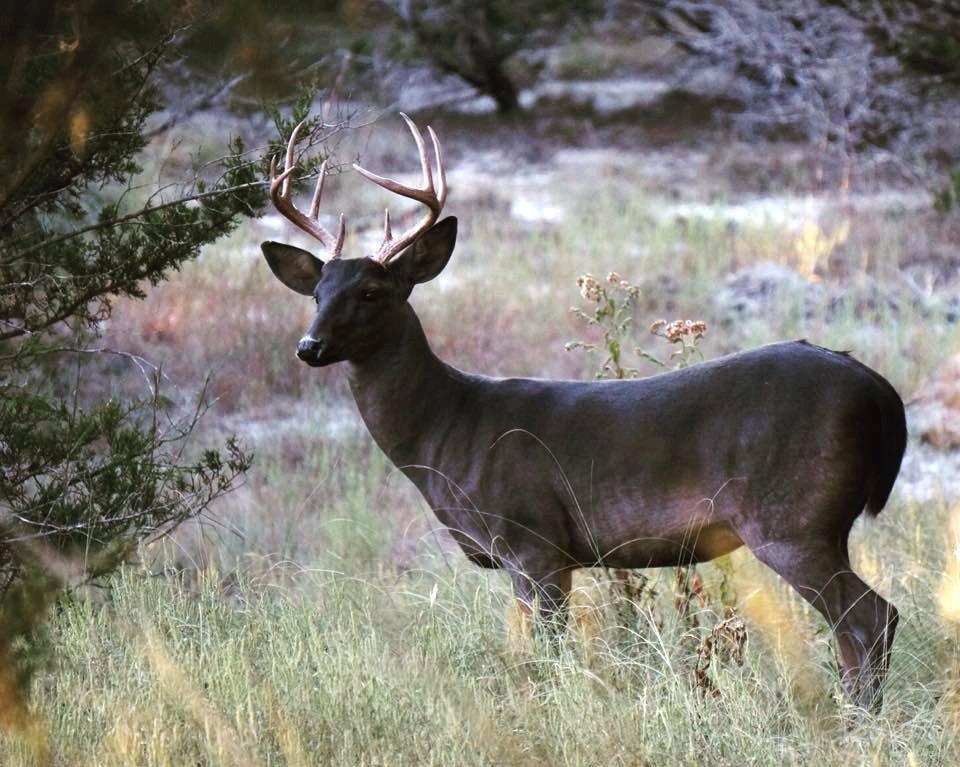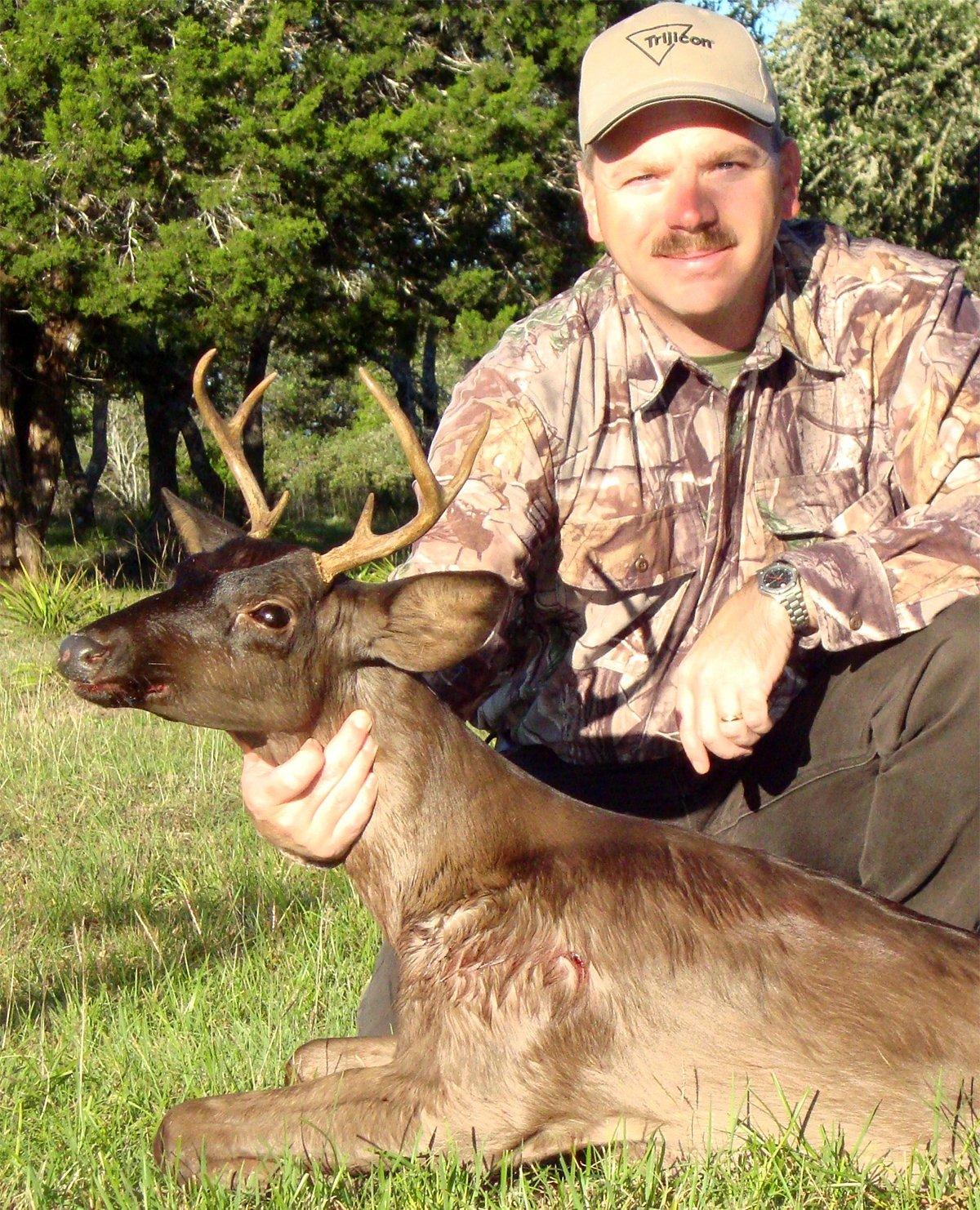A black deer is even rarer than an albino or piebald deer. Here are fun facts about this rare color phase
I was hunting one time in South Texas when I got this text: If you get done early come see me. I know how you like weird deer stuff …
I was intrigued, and lucky for me, I shot my buck later that day. The next morning, I showed up at my buddy's place outside Uvalde.
C'mon in and check it out, said Eddie Stevenson, who has hunted all over the world. I gawked at the cape buffalo, impala, and dozens of other mounts in his trophy room. Then I saw the real prize and hollered, You got a melanistic deer!
Eddie explained that a few years earlier, an old Texas rancher had called and said, You might think I'm crazy, but I've got a black deer coming out into the back pasture. Looks like any other buck, but he's full black. You can hunt him if you like.
Eddie gladly obliged, and built a ground blind in the rancher's pasture. On the third afternoon, a buck stepped out and he did a double take. Not because of the rack, but the animal's color — deep gray all over with brownish tints, and a noticeably blacker head and face.
It took Eddie a nanosecond to pull the trigger. I know he's a young buck, but this deer was on a small tract of land and I'm quite certain he would not have survived to maturity, he told me. Regardless, he's a trophy in my book.
Sidenote: On the drive out, he stopped by the rancher's house to show him the prize.
That's a nice deer, but the black one I told you about had a rack three times that big! said the old-timer.
(Don't Miss: The 5 Best Bullet Styles for Deer Hunting)
Biology of Melanistic Deer
You probably have heard of albino and piebald deer, the latter of which is a brown animal splotched with white and looks sort of like a pinto pony. Biologists say that fewer than 2% of all whitetails born will exhibit those white traits.
Melanistic deer are less common, the rarest of the rare. The first one observed and recognized by an American scientist was in 1929. Of the millions of whitetails that have been shot by hunters in the modern era, only a handful of black deer have been documented.
Melanistic whitetails have a genetic mutation that causes their bodies to produce too much of the pigment melanin, which gives the deer its dark coloration. A melanistic buck is not always solid black. There are gray to mahogany to walnut color phases, with white on the belly and tail.
Unlike piebald deer, which often have deformities like curved spines and partially stunted legs, none of the research conducted to date suggests that melanistic bucks have inferior bodies or antlers. They appear perfectly normal, save for their color.
(Don't Miss: What Really Kills Whitetail Fawns?)
Where Black Deer Are Found
Melanistic whitetails have been reported in Mississippi, Michigan, Virginia, Iowa, and Pennsylvania. Biologists note that the odd black deer with the genetic mutation could show up anywhere in the country.
Interestingly, the Edwards Plateau and Hill Country of central Texas are ground zero for black deer. More melanistic does and bucks have been seen and harvested in this region than any other place in North America, and specifically in these eight Texas counties: Hays, Travis, Comal, Williamson, Blanco, Guadalupe, Burnet, and Caldwell. According to the National Deer Association, this is the highest known localized incidence rate of melanism anywhere in the whitetail's range. Researchers can't say for certain why an inordinate number of black deer show up here.
(Killer Buy Alert: EZ Bow Sling)
Odds of Seeing One
I have hunted and observed whitetails for 40 years in all corners of North America, and have never seen a melanistic deer. I've researched and written about whitetails extensively for more than 30 years, and have documented pictures and stories of exactly 2 black deer shot by hunters — my friend Eddie's Texas buck, and a dusky 6-pointer killed in Iowa six years ago.
If you see a melanistic buck, much less shoot one, consider yourself one of the luckiest hunters in America.
(Don't Miss: Doe Comes Running When She Hears Human Baby's Cries)








